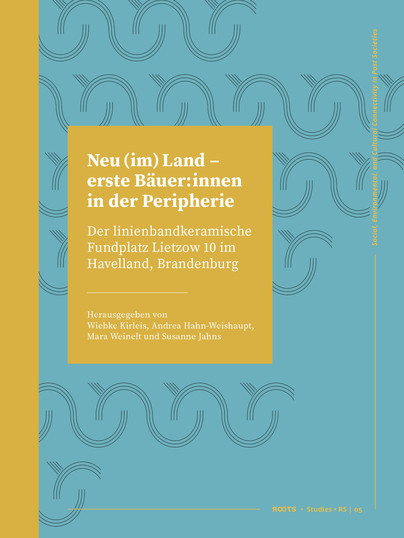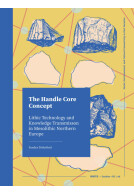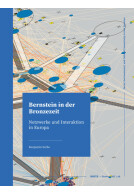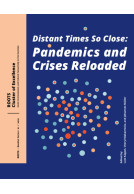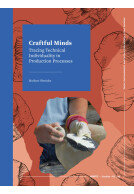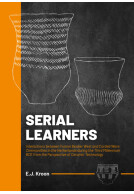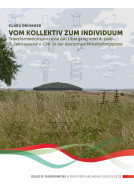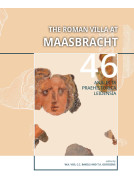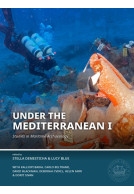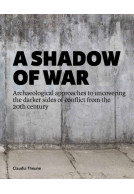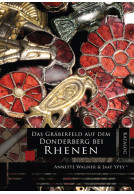Neu (im) Land – erste Bäuer:innen in der Peripherie (Paperback)
Der linienbandkeramische Fundplatz Lietzow 10 im Havelland, Brandenburg
Imprint: Sidestone Press
Series: ROOTS Booklet Series
Pages: 170
Illustrations: 32fc / 14bw
ISBN: 9789464270877
Published: 21st May 2024
Script Academic & Professional
Series: ROOTS Booklet Series
Pages: 170
Illustrations: 32fc / 14bw
ISBN: 9789464270877
Published: 21st May 2024
Script Academic & Professional
This book will be reprinted and your order will be released in due course.
You'll be £35.00 closer to your next £10.00 credit when you purchase Neu (im) Land – erste Bäuer:innen in der Peripherie. What's this?
+£4.99 UK Delivery or free UK delivery if order is over £40
(click here for international delivery rates)
Order within the next 6 hours, 14 minutes to get your order processed the next working day!
Need a currency converter? Check XE.com for live rates
(click here for international delivery rates)
Order within the next 6 hours, 14 minutes to get your order processed the next working day!
Need a currency converter? Check XE.com for live rates
Bei einer Ausgrabung im havelländischen Lietzow in Brandenburg wurden jungsteinzeitliche Siedlungsbefunde entdeckt. Sie gehören zu zwei Hofstellen der jüngeren Linienbandkeramik, die um 5100-5000 v. u. Z. datiert. Die in der äußersten Peripherie des damaligen bäuerlichen Siedlungsgebiets gelegene Siedlung Lietzow 10 bestand über ungefähr zwei Generationen. Die von dichtem Eichen-Kiefernwald umgebene Siedlung lag wie eine kleine Insel auf einer Grundmoränenplatte, die mit relativ fruchtbarem Boden und guter Grundwasserversorgung einen günstigen Standort für eine bäuerliche Existenz bot. Die nahen Niederungsgebiete waren zur gleichen Zeit von mesolithischen Wildbeutergruppen bewohnt.
Die Analysen der zahlreichen Tier- und Pflanzenreste von Lietzow 10 zeigen das Bild einer voll entwickelten neolithischen Landwirtschaft mit dem Rind als wichtigstem Nutztier und Emmer als Hauptgetreide. Fischfang und wohl auch Sammelwirtschaft trugen in größerem Umfang zur Nahrungssicherung bei. Die Jagd spielte nur eine untergeordnete Rolle.
Trotz ihrer randlichen Lage war die Siedlung aber keinesfalls isoliert. Der Großteil der Formen und Verzierungen des umfangreichen Keramikinventars zeigt deutlich den Einfluss aus dem mitteldeutschen Raum. Darüber hinaus sind weitreichende Fernbeziehungen bis Süddeutschland nachweisbar. Auch die Steinartefakte belegen Fernkontakte. Der Großteil der Steingeräte verweist auf ein regionales Netzwerk, da Flint und Mahlsteinrohstoff als Vollkerne von in einiger Entfernung zur Siedlung gelegenen Abbaustellen stammen. Hingegen fehlt ein eindeutiger Beweis für einen Austausch zwischen den mesolithischen und neolithischen Gruppen im Havelland.
English abstract
This publication presents research on the first peasants of the Linear Pottery group in Brandenburg, northern Germany. The region is of particular interest because it is situated in the absolute periphery of the Linear Pottery area. The volume combines the results on settlement features, pottery and stone tools with archaeobotanical and archaeozoological studies on the diet and economy of these Neolithic people with focus on the site of Lietzow 10. This holistic approach fulfils a research desideratum, because the state of knowledge about such enclaves of agricultural life in the midst of the settlement area of forager groups is still incomplete.
The excavation of the site Lietzow 10 yielded features from which a settlement site with two farmsteads could be reconstructed, which was inhabited for 2-3 generations. Large quantities of pottery were found, according to typology dating into the period around 5100 to 5000 BCE at the latest, i.e. to the younger LBK. Several radiocarbon dates support this chronological classification and confirm the Linear Pottery chronologies from Central Germany for Brandenburg features.
Despite its peripheral location, the settlement site was by no means isolated; the pottery finds even attest to long-distance contacts. The supply of raw material for the stone implements points to a regional network, for flint and grindstone raw material were not extracted in the vicinity of the site, but were apparently mined some distance away.
The archaeozoological and archaeobotanical investigations – for the latter, samples from other Neolithic settlements in Havelland were also available – provide insights into the economic practices and diet of the settlers. The cereals found were almost exclusively emmer, other crops were flax and pea. Animal husbandry was of outstanding importance for the food supply. Among the domestic animals, cattle probably played the greatest economic role, but pigs and small ruminants were also significant. Both, the crop and the domestic animal evidence show a fully developed agriculture. In addition, there is evidence for extensive gathering. Hunting – unlike fishing – did not play a major role in the diet, although wide range of game species is represented.
Other titles in the series...
Other titles in Sidestone Press...







